Dunnock, Heggenmus, Heckenbraunell, Ferreirinha Comum, Acentor Común
Spotted at Monte Horizonte in the Alentejo region of Portugal. Dunnock sound
The Dunnock (Prunella modularis) is a small passerine bird, or perching bird, found throughout temperate Europe and into Asia. It is by far the most widespread member of the accentor family, which otherwise consists of mountain species. Other common names of the Dunnock include, the Hedge Accentor, Hedge Sparrow, or Hedge Warbler.
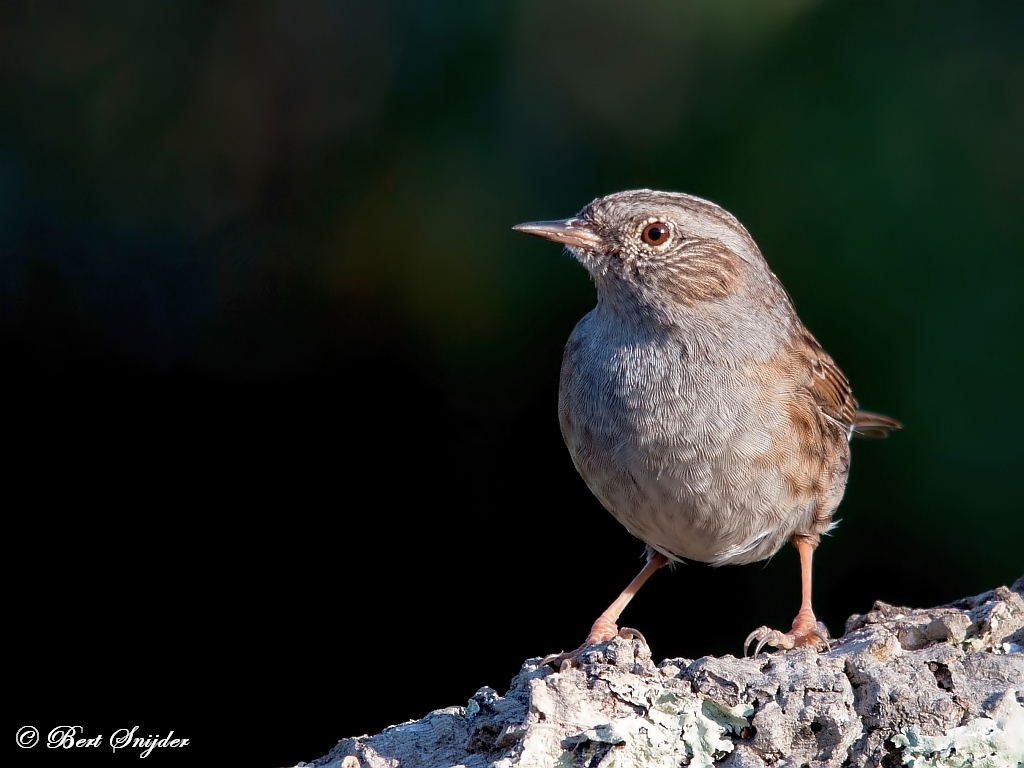
More photos at the bottom of this page:
Dunnocks reside in the more mild western and southern parts of the globe, inhabiting much of Europe including Lebanon, Northern Iran, and the Caucasus. Favorite habitats of the Dunnock include the woodlands, shrubs, gardens, and hedgerows. It builds a neat nest low in a bush or conifer, where adults typically lay three to five unspotted blue eggs. Dunnocks are territorial and may engage in conflict with other birds that encroach upon their nests. Males who share a territory exhibit a strict dominance hierarchy that favors the alpha male in terms of reproduction. Furthermore, members of a group are rarely related, and so competition can result.
A robin-sized bird, the Dunnock typically spans 13.5–14 cm in length. It possesses a streaked back, somewhat resembling a small house sparrow. Like the house sparrow, the Dunnock favors a drab appearance in order to avoid predation. It is brownish underneath, and has a fine pointed bill. Adults have a grey head, and both sexes similarly coloured.
The main call of the Dunnock is a shrill, persistent “tseep” along with a high trilling note, which betray the bird’s otherwise inconspicuous presence. The song is rapid, thin and tinkling, a sweet warble which can be confused with that of the wren, but is shorter and weaker.
Female territorial ranges are almost always exclusive. However, sometimes, multiple males will cooperate to defend a single territory containing multiple females. Males exhibit a strong dominance hierarchy within groups: older birds tend to be the alpha males and first year birds are usually the betas. The male’s ability to access females generally depends on female range size, which is affected by the distribution of food. When resources are distributed in dense patches, female ranges tend to be small and easy for males to monopolize. Subsequent mating systems, as discussed below, reflect high reproductive success for males and relatively lower success for females. In times of scarcity, female territories expand to accommodate the lack of resources, causing males to have a more difficult time monopolizing females. Hence, females gain a reproductive advantage over males in this case.
The Dunnock possesses fluid mating systems. Females are often polyandrous, breeding with two or more males at once, which is quite rare among birds. This multiple mating system leads to the development of sperm competition amongst the male suitors. DNA fingerprinting has shown that chicks within a brood often have different fathers, depending on the success of the males at monopolizing the female. Males try to ensure their paternity by pecking at the cloaca of the female to stimulate ejection of rival males’ sperm. Dunnocks take just one-tenth of a second to copulate and can have sex more than 100 times a day. Males provide parental care in proportion to their mating success, so two males and a female can commonly be seen provisioning nestlings at one nest.
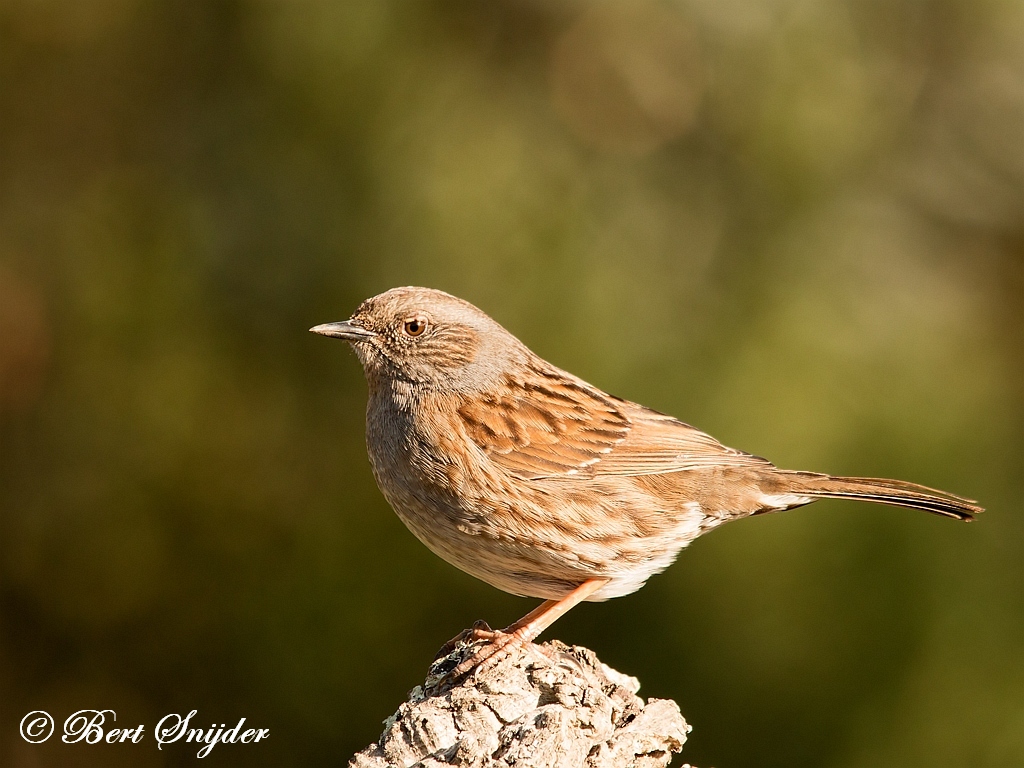
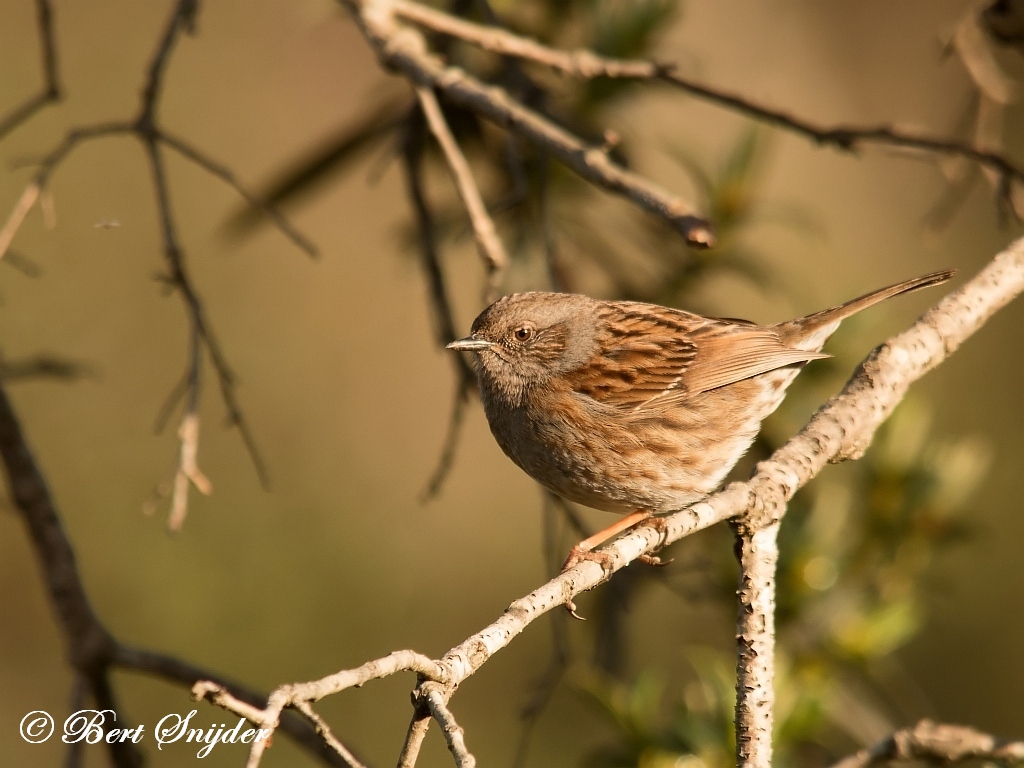


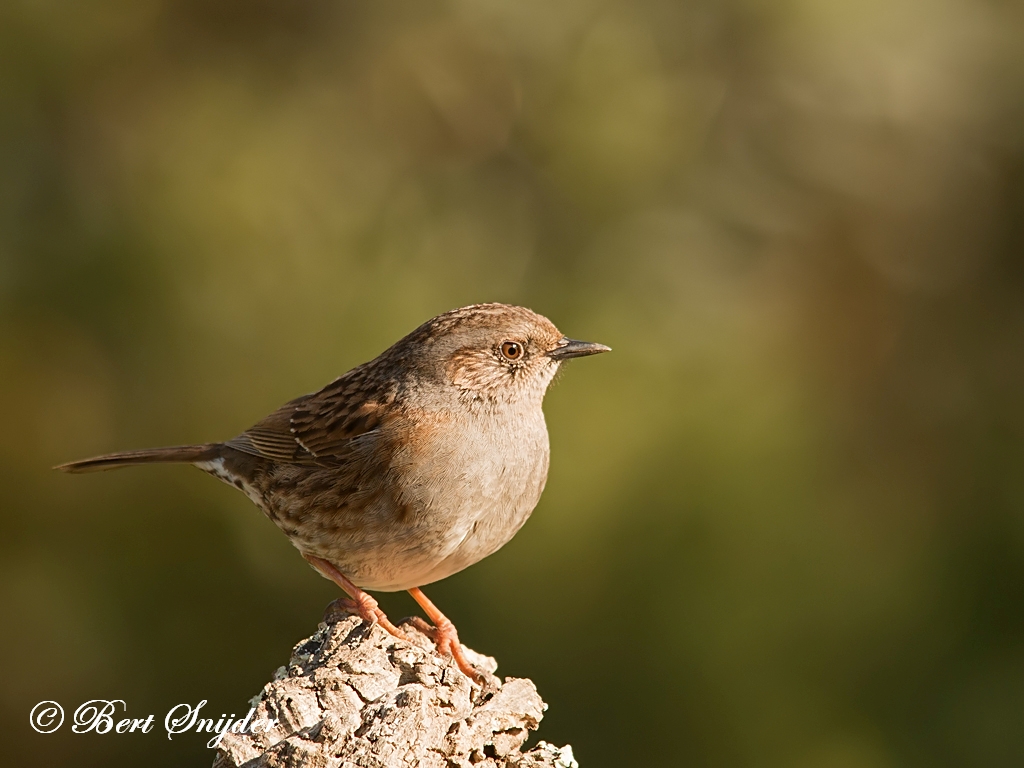
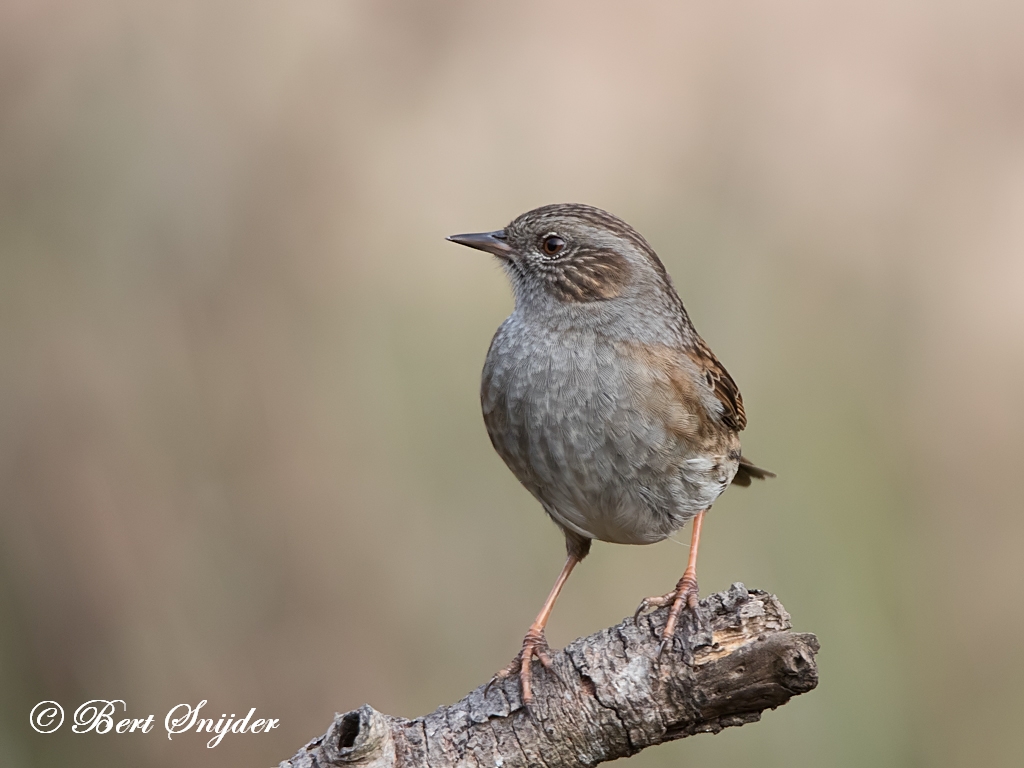
Other synonyms:
Asturian: Cardexina, Cenizu
Breton: Ar wrac’hig an drez, Ar wrac’hig an drez
Catalan: Pardal de bardissa, Xalambrí
Catalan (Balears): Xalambrí
Czech: Pevuška modrá, P?vuška modrá, pìvuška modrá
Welsh: Brach y cae, Brith y cae, Gwrachell y cae, Gwrychell, Jac llwyd y baw, Llwyd bach, Llwyd y berth, Llwyd y clawdd, Llwyd y dom, Llwyd y gwrych, Siani llwyd
Danish: Jernspurv
German: Braunelle, Heckenbraunelle
English: Dunnock, Dunnock Accentor, European Dunnock, Hedge Accentor, Hedgesparrow, Hedge-Sparrow
Esperanto: pronelo
Spanish: Acentor Comun, Acentor Común
Estonian: Vosaraat, Võsaraat
Basque: Pardal de bardissa, Tuntun arrunta
Finnish: Rautiainen
Faroese: Jarntítlingur
French: Accenteur mouchet
Irish: Donnóg
Gaelic: Gealbhonn nam Preas
Galician: Azulenta, Pardal de bardissa
Manx: Bog Keeir, Drean Mollagh
Croatian: Sivi Popic
Hungarian: Erdei szürkebegy
Icelandic: Runnatítla, Runntítla
Italian: Passera scopaiola, Passera scopaiola europea, Passera scropaiola
Japanese: yoaroppakayakuguri, yo-roppakayakuguri
Cornish: Golvan ke
Latin: Prunella modularis
Dutch: Heggemus, Heggenmus
Norwegian: Jernspurv
Polish: plochacz pokrzywnica, pokrzywnica, pokrzywnica
Portuguese: ferreirinha comum, Ferreirinha-comum
Romansh: Brunella da chaglia
Russian: Lesnaya Zavirushka
Northern Sami: Ruovdecihci
Slovak: Vrchárka modrá
Slovenian: siva pevka
Albanian: Dredhuesi gushëpërhimë
Swedish: Järnsparv
Birdwatching Holiday Alentejo, Vacation Portugal for birders guided birdwatching Tours and Trips.